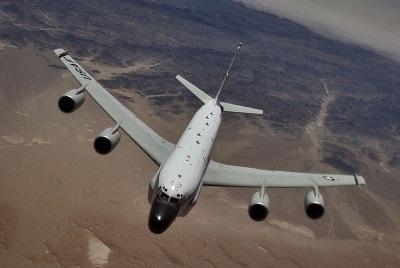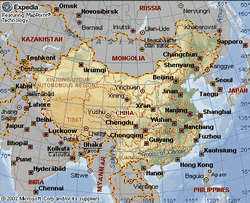Proximity’s Perils
A Chinese fighter jet reportedly neared to within ten-feet of a U.S. Air Force reconnaissance aircraft over contested waters of the South China Sea. The Chinese pilot’s shortsightedly aggressive antics forced the USAF plane to take evasive action to avoid a midair collision of potentially dire consequence in international airspace—so said the Pentagon on Thursday, 29 December 2022.

The perilously close, 21 December encounter followed what the U.S. has called a recent trend of increasingly dangerous behavior by the Chinese communist government, which has formerly and repeatedly stated that the presence of U.S. military vessels and aircraft in the South China Sea is not good for peace.
Notwithstanding the tinny-racket of Chinese sabers rattling, U.S. military ships and planes routinely carry out surveillance operations within and over vast expanses of the South China Sea that overlap with the exclusive economic zones of Vietnam, Malaysia, Brunei, Indonesia, and the Philippines—expanses arbitrarily claimed by China. Trillions of dollars in trade flow through the disputed waterways, which themselves contain vast resources in the ways of rich fishing grounds and gas fields.
The 21 December incident involved a People’s Liberation Army Naval Air Force (PLAN) J-11, a lowest-bidder knockoff of Sukhoi’s Su-27 twin-engine jet fighter, and a USAF RC-135—a sophisticated reconnaissance platform based on Boeing’s 707-derivative KC-135 Stratolifter airframe. A U.S. military spokesperson reported the J-11 came within ten-feet of the RC-135’s wing before passing within twenty-feet of the larger aircraft’s nose—thereby compelling the USAF crew to initiate evasive action.
Australia’s defense department alleges that in May 2022, a Chinese J-16 fighter jet—another Su-27 forgery—recklessly intercepted an Australian military P-8 surveillance aircraft in the South China Sea region, flying close in front of Aussie plane and releasing a bundle of chaff—slivers of aluminum used to beguile enemy radar—which was ingested by the P-8’s engines.

Canada has made similar accusations against the People’s Liberation Army Air Force (PLAAF), stating that over several occasions spanning April and May 2022, PLAAF aircraft approached and harassed Royal Canadian Air Force (RCAF) CP-140 Aurora long-range patrol aircraft, occasionally forcing the latter to divert from their flight paths for purpose of avoiding potential collisions with the intercepting planes. In a formal statement, the Canadian Armed Forces set forth: “"In these interactions, PLAAF aircraft did not adhere to international air safety norms. These interactions are unprofessional and/or put the safety of our RCAF personnel at risk."
In a statement of its own addressing the 21 December near-miss, the U.S. military asserted: “The U.S. Indo-Pacific Joint Force is dedicated to a free and open Indo-Pacific region and will continue to fly, sail, and operate at sea and in international airspace with due regard for the safety of all vessels and aircraft under international law.”
In a November meeting with his Chinese counterpart, U.S. Defense Secretary Lloyd Austin voiced the need to improve U.S./Chinese crisis communications, and noted what he euphemistically termed “dangerous behavior” by Chinese military aircraft.

Throughout the last twenty-years, relations between China and the United States have been characterized by antipathy, distrust, and mounting tensions over matters as disparate as China’s deplorable human rights record, pollution, military activity in the South China Sea, and Taiwan’s sovereignty.
Former U.S. House Speaker Nancy Pelosi's August 2022 trip to Taiwan infuriated Chinese officials, who considered the action an attempt on the U.S.’s part to interfere with Chinese internal affairs. Beijing subsequently undertook massive military drills off the shores of Taiwan.
While no formal diplomatic relations exist between the United States and Taiwan, the U.S. is bound by law to provide the island means by which to defend itself.
 Aero-TV: DeltaHawks Diesel Power Steps Into the Spotlight
Aero-TV: DeltaHawks Diesel Power Steps Into the Spotlight NTSB Prelim: Mooney Aircraft Corp. M20K
NTSB Prelim: Mooney Aircraft Corp. M20K ANN FAQ: Turn On Post Notifications
ANN FAQ: Turn On Post Notifications ANN's Daily Aero-Linx (12.20.25)
ANN's Daily Aero-Linx (12.20.25) Aero-News: Quote of the Day (12.20.25)
Aero-News: Quote of the Day (12.20.25)





